Each week over the past three weeks, Suunto has dropped a nugget or two of new information. Each by themselves probably would have made sense in the ‘Week in Review’ posts – had there actually been those posts each week. Instead, they’re getting a Suunto-Super-Monday style post, with everything in one go. Think of it like a combo meal, albeit I’m not entirely sure which piece is the drink vs meal vs chips.
In any case, onto what I think is probably the biggest bit of news.
Suunto Platform Integration with Xiaomi Mi Fitness:
Over the last few years, Suunto has arguably increased its 3rd party endurance-sports connectivity more than anyone out there aside from Garmin. Sure, there will always be gazillions of apps that grab Apple Health/WatchOS data, but that’s a bit different than the connectivity Suunto has been building with something like 150+ app partners that sometimes do legit bidirectional data into the Suunto platform. Likewise, we’ve seen companies like Polar start to license their sports algorithms, similar to what Firstbeat used to do before Garmin bought them. And Polar even recently announced direct Sennheiser earbud integration into the Polar Flow platform.
But this most recent Suunto announcement is seemingly the start of something quite different: Other watch makers leveraging Suunto’s app and backend web platform. I’m not aware of any current major watch makers which allow that for what is sorta their competitors.
To start, Xiaomi makes a lot of things – phones, activity trackers, smart watches, etc (including the Mi Band and Mi Watch). They’re most popular in China and Asia, but still available in the world, including the US & Europe. These budget devices can be as low as ~$30-$40 for the bands, and into the low $100 range for the watches. The apps on these units tend to be more basic in terms of features, and don’t tend to sway as heavily towards the sports/endurance realm.
This partnership aims to address that gap. Xiaomi device owners can link their accounts to Suunto, in much the same way you’d link an account to other platforms like Strava or TrainingPeaks. Here’s how that looks from the Xiaomi side, when choosing to connect to Suunto:
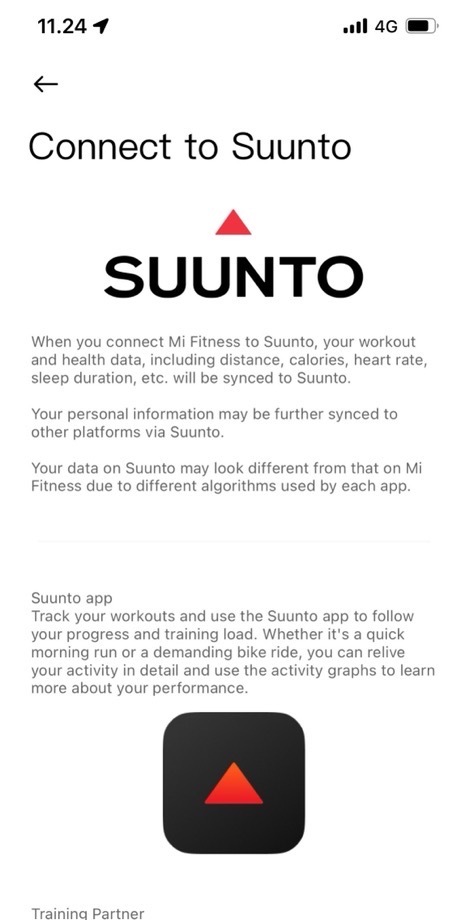
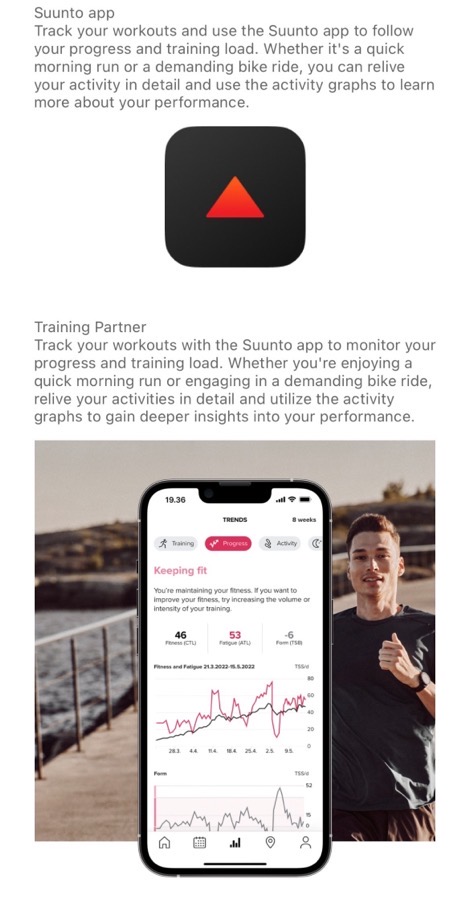
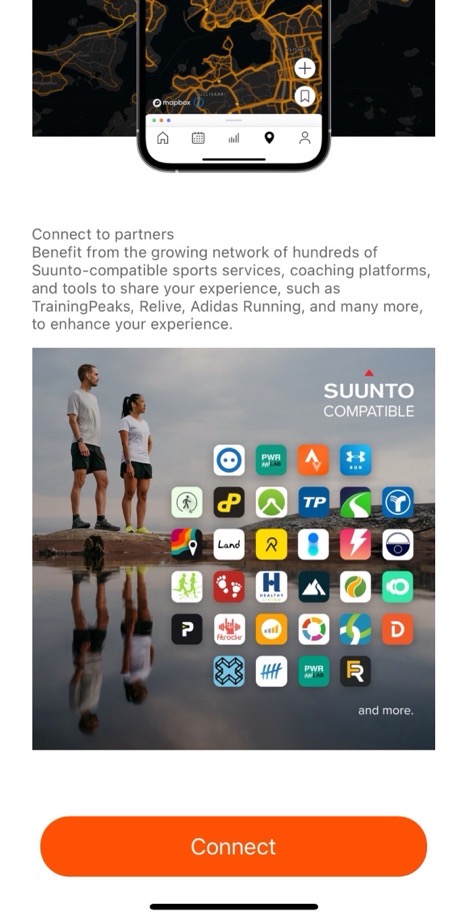
And then once connected, you’ll get your workout and 24×7 metrics (such as sleep and activity tracking), showing within the Suunto app as well as Xiaomi apps. For example, a side-by-side comparison of the same activity shown on both sides (Mi Fitness at left, Suunto App at right). Of course, there’s more data when scrolling down on the Suunto side, including splits, training volume, etc…
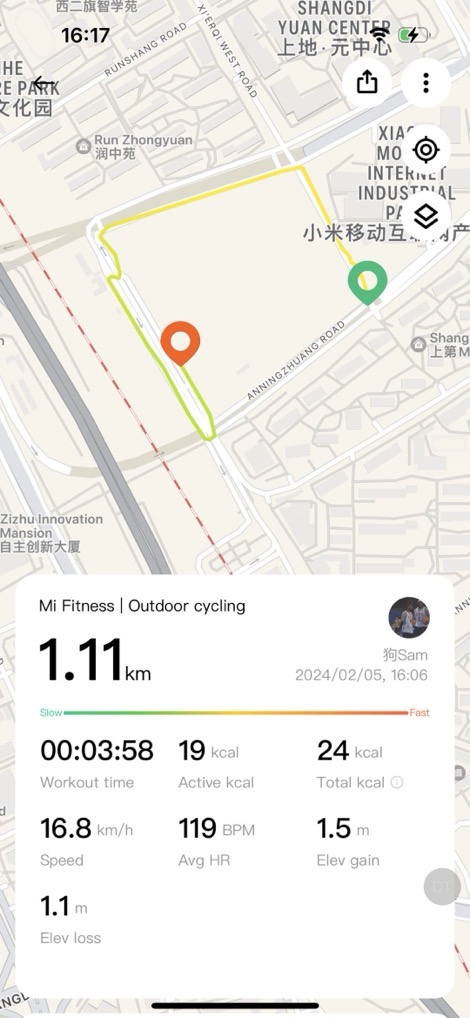
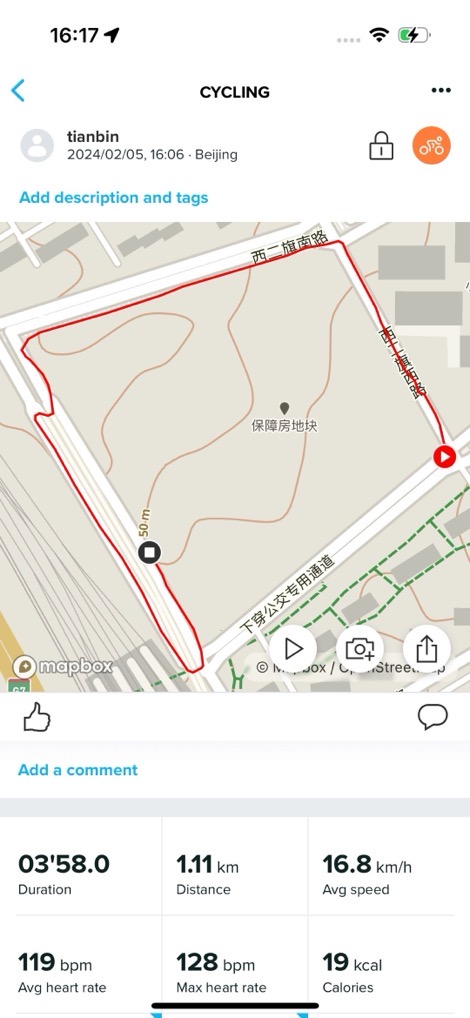
In addition, because it’s essentially the full breadth of the Suunto App, users are also getting onwards connectivity to even more 3rd party apps/platforms than the Mi Fitness app is doing natively.
It’s an interesting partnership. I’d assume the goal here from Suunto’s side is both revenue directly from Xiaomi in the form of some sort of licensing of the platform, as well as the tangential hope this might convert some users from the more basic Xiaomi watches to the more sporty Suunto watches.
Suunto App Expansions:
Suunto has released three new apps this month, all roughly aligned to the Vertical Week, and supporting that challenge and related ones. Here’s the quick overview of the three new apps:
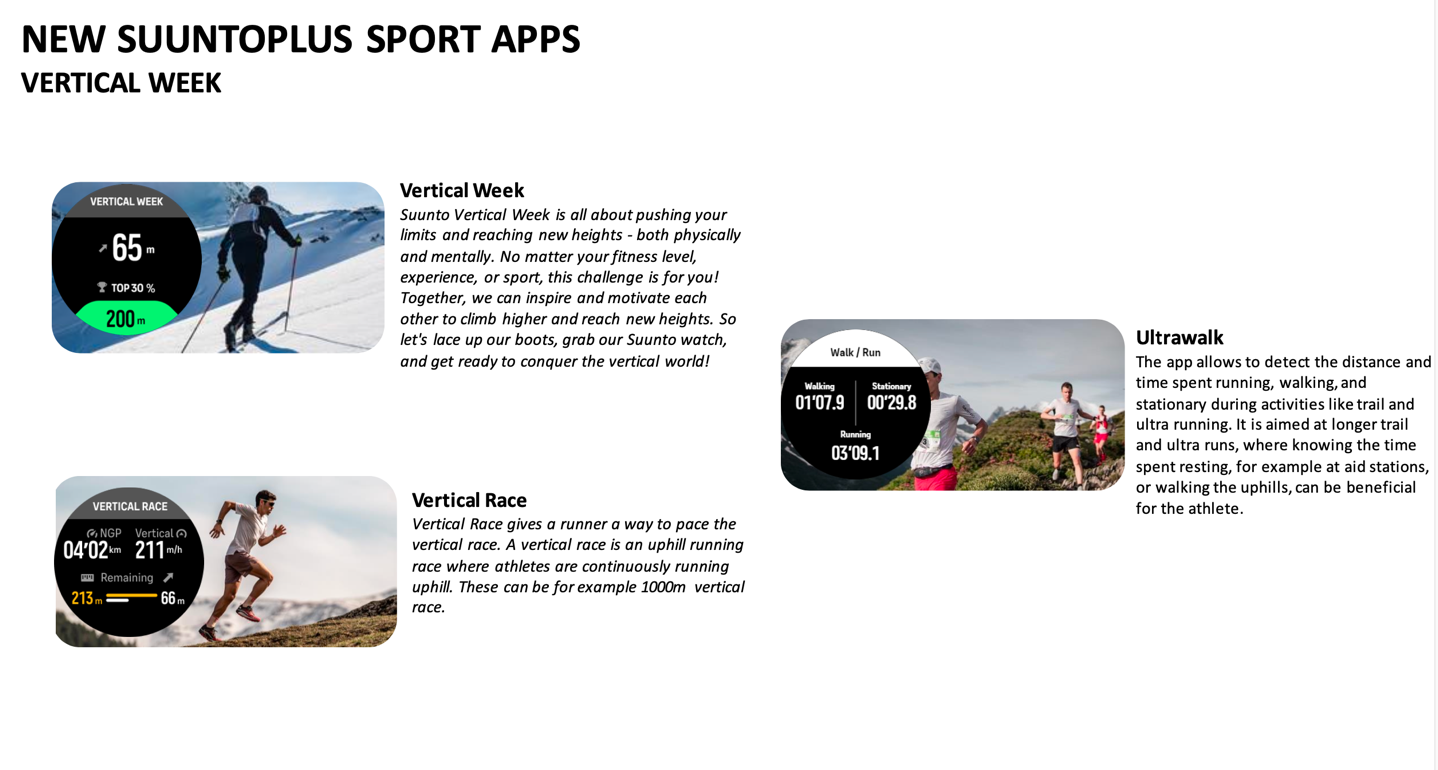
And then here’s the more detailed specs of each particular app. First there is ‘Vertical Race’, which admittedly is a wee bit confusing when you’ve got their two marquee products named ‘Suunto Vertical’ and ‘Suunto Race’. The name of this app really has nothing to do with either watch. It’s just bad luck that this app is sorta the Apple equivalent to naming the app: “iPad iMac”.
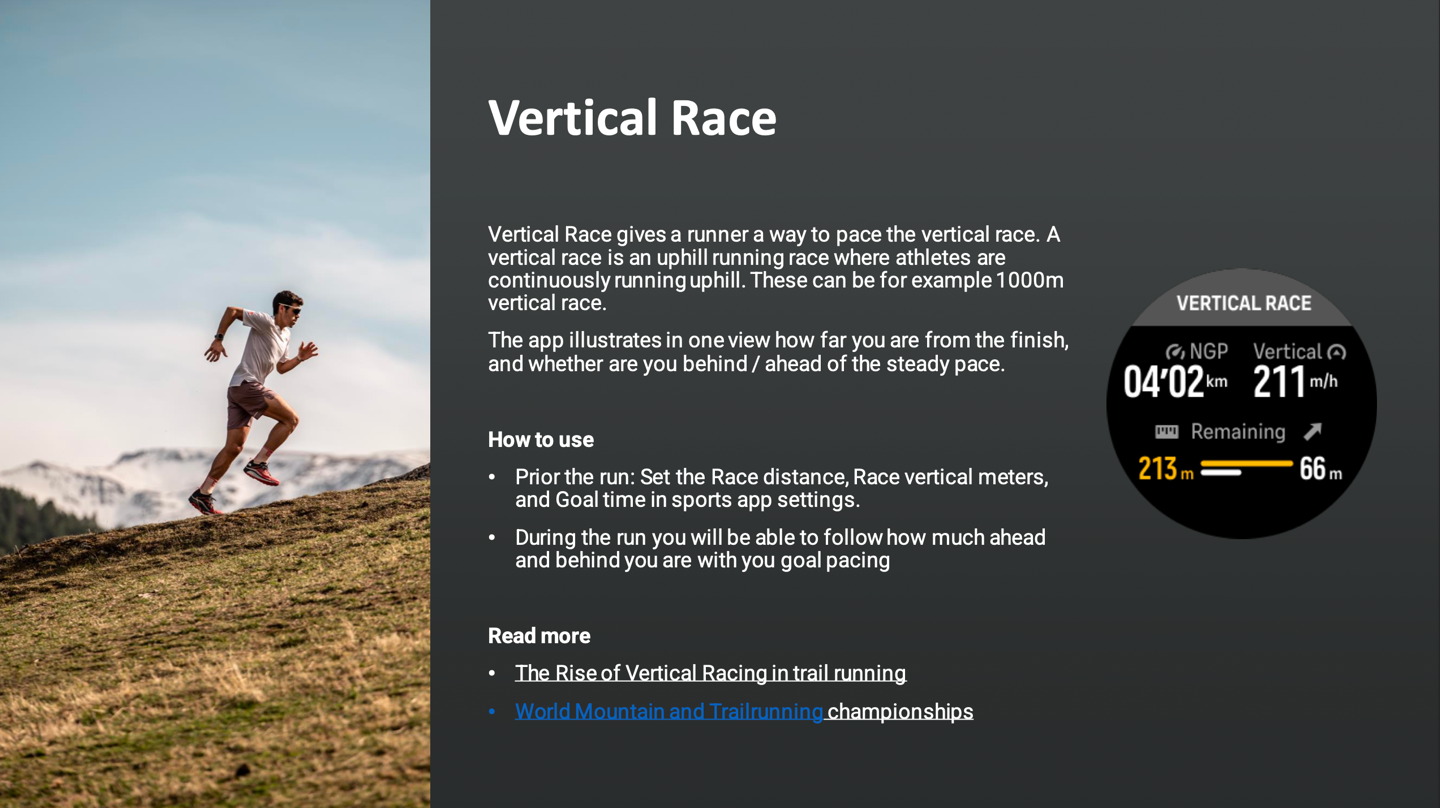
Then there’s the Ultrawalk app:
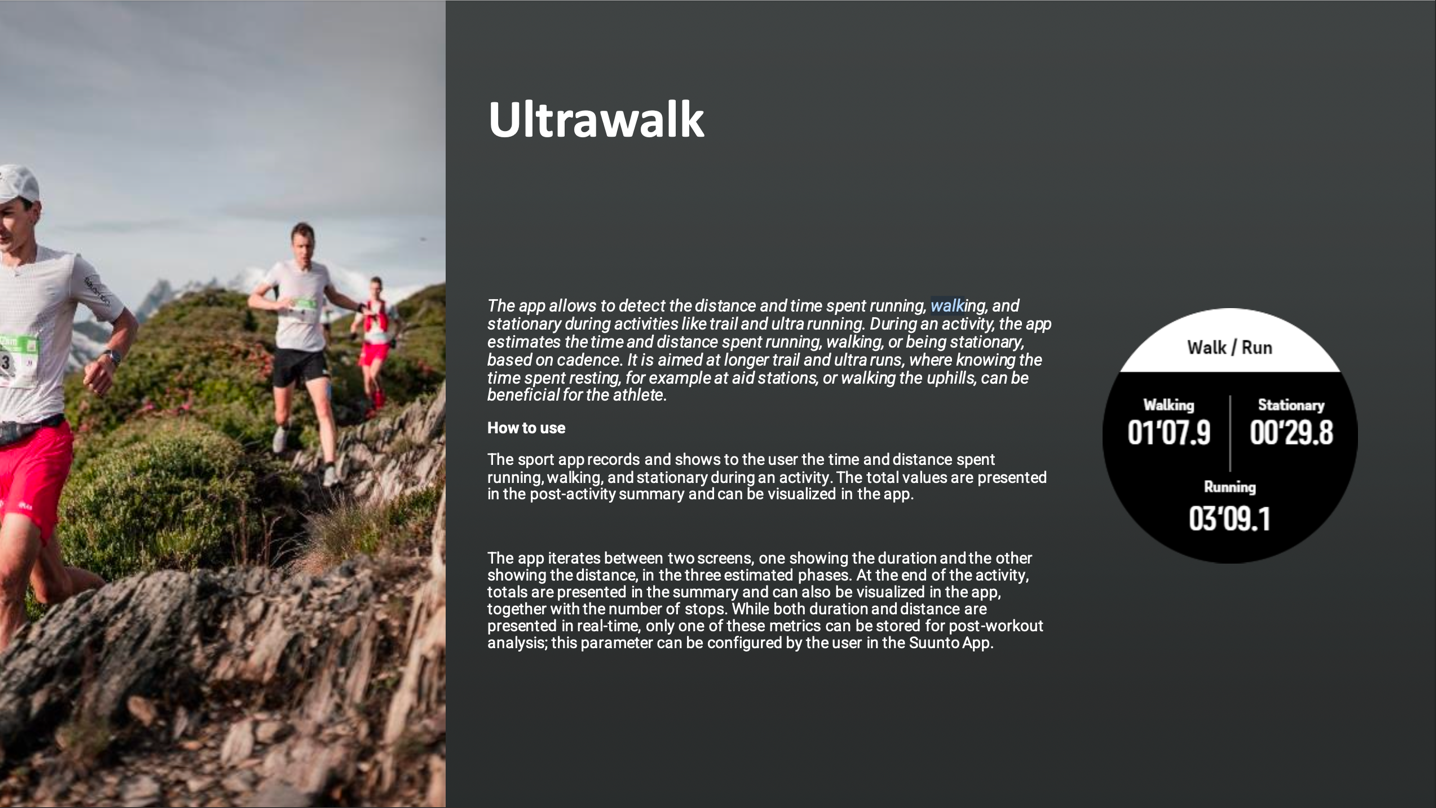
And finally the Vertical Week app.
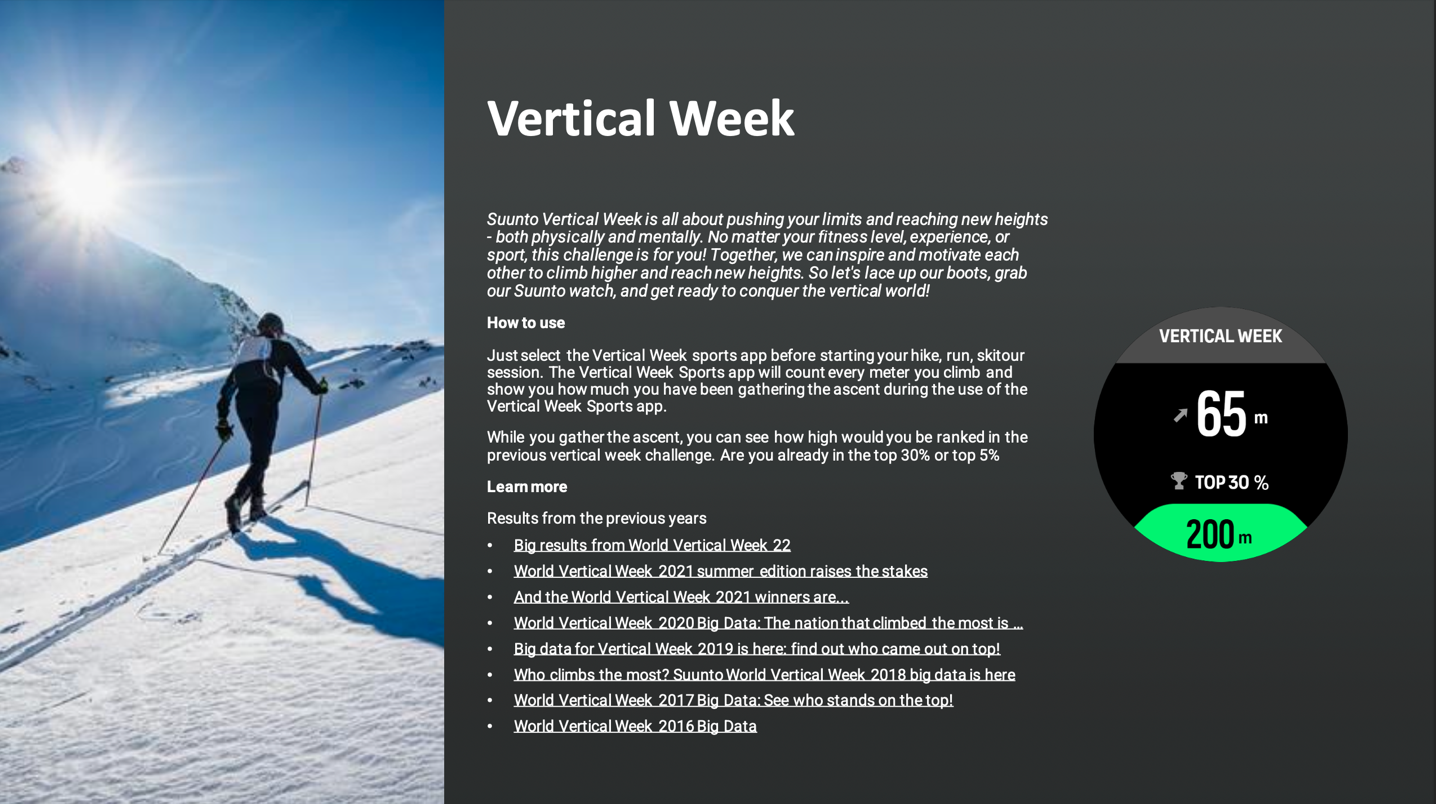
Easy peasy, let’s get onto the last bit of news.
UTMB Partners with Suunto:

I don’t generally cover sponsorship announcements too much, unless there’s some fun inside-baseball angle to it. Which, occurs here.
This one is notable, albeit probably pretty obvious that something had to give. Up till now, Wahoo had a watch partnership with the Ironman group, inclusive of UTMB. However, with Wahoo announcing there won’t be a successor to the Wahoo RIVAL watch, it doesn’t make sense to keep sponsoring the UTMB aspect of things (since it’s a running race). Whether or not that “multi-year” contract Wahoo previously had was set to expire or not, isn’t clear to me.
However, what is clear, is Suunto has stepped in to partner with UTMB for their World Series events. Presumably we’ll now see a gigantic Suunto Vertical or Suunto Race watch hoisted over the start/finish line, as opposed to the previous Wahoo RIVAL:

(Photo credit: UTMB)
What’ll be interesting there is whether or not Suunto can gain ground back in the ultra scene. Years ago, Suunto absolutely dominated this venue. Then of course Garmin came along with the Fenix series, slowly erasing Suunto’s leadership from an endurance sports standpoint. Garmin even launched the Fenix 6 at UTMB in 2019, alongside being listed as an ‘official supplier’ that year.
But of course, times have changed. Since then, Suunto seems to have found their mojo again, now offering map-capable products (Race & Vertical) that can compete in this arena. But at the same time, COROS has also entered the game with not just capable products, but a vast array of sponsored athletes (both big names and smaller influencers) – even stealing some big names away from Suunto.
Obviously though, big names and title sponsorships might influence product sales, but at the end of the day a product still has to be good. That’s even more true in this age of widespread and diverse review availability.
Anyways, I don’t know whether or not this will move the dial for Suunto in this realm, but I do know that I expect to see a gigantic Suunto watch over the finish line by this summer (the opening Suunto sponsorship event a few weeks ago lacked any such watch). And heck, given the Race’s AMOLED display, they could legit do some cool dynamic UI/graphics things with that tied to race results/etc (like we see in other stadium sports).
With that, thanks for reading!
FOUND THIS POST USEFUL? SUPPORT THE SITE!
Hopefully, you found this post useful. The website is really a labor of love, so please consider becoming a DC RAINMAKER Supporter. This gets you an ad-free experience, and access to our (mostly) bi-monthly behind-the-scenes video series of “Shed Talkin’”.
Support DCRainMaker - Shop on Amazon
Otherwise, perhaps consider using the below link if shopping on Amazon. As an Amazon Associate, I earn from qualifying purchases. It doesn’t cost you anything extra, but your purchases help support this website a lot. It could simply be buying toilet paper, or this pizza oven we use and love.





















So I assume, all uploaded activities from Xiaomi devices will count towards daily load ‘as much; as ones recorded on Suunto device? This is quite ‘big’ and contrary to what Garmin is doing with its Connect, where only activities recorded on Garmin Device (or by few platforms e.g. Rouvy) count towards daily load.
One other thing, discussed in Suunto/Hammerhead partnership – do Suunto still not push back the ‘total’ (meaning from different devices) load back on its watches?
That’s my understanding.
In the case of Suunto/Hammerhead, Hammerhead doesn’t do any physio type tracking of that data, so pushing back the ‘load’ doesn’t have any impact since load isn’t tracked.
My rowing workouts on Concept2 (recorded by the rower itself, not by the watch) does impact my training load :-)
Thanks for the reply. It is actually quite tricky. Like you said, it wouldn’t make sense to put the combined (from biking and running) load back onto Karoo, but would make some sense to put the total on Suunto’s watch – if one thinks of it as a ‘command center’ of sorts… But then it would be inconsistent, so maybe the idea if keeping the total load in the app only is the right call..
(Sorry for the double post below)
In some sense, Suunto integration has been available for quite a while in the form of SportsTracker. I’ve been using the iOS SportsTracker app, and it seamlessly reads Apple Watch workouts from Health and imports them into the Suunto backend. Since the Suunto app and SportsTracker share that backend, all the data is effectively in the Suunto app as well. I haven’t noticed any Suunto app features that aren’t also available in SportsTracker. There are (very) slight differences in how the two apps present the data, but the features and functionality look to be identical.
Yeah, though, Suunto acquired Sports Tracker back in 2015, and basically determined it was the platform going forward: link to amersports.com
I got (re)introduced to the Suunto App via the Karoo Hammerhead and purchased a Suunto Race when it launched based on the single app tie-in. So I can see how they might have data points like this to make them do more in this area.
Also these are “free” subscribers who you could one day upsell to a subscription a la Fitbit and Whoop for “advanced” health metrics.
That’s sort of what happened in my case. I used Suunto watches many years ago, so I had an existing Suunto account. But I’ve been an Apple Watch user for a long time and, at least right now, can’t imagine switching to anything else. But I got curious one day and tried out the SportsTracker app. It’s actually quite good, and the training insight is really helpful. Easily worth the premium subscription. So while Suunto is extremely unlikely to ever get any more money from me through a watch purchase, they are collecting some annual revenue through the app subscription.
Thanks for the reply. It is actually quite tricky. Like you said, it wouldn’t make sense to put the combined (from biking and running) load back onto Karoo, but would make some sense to put the total on Suunto’s watch – if one thinks of it as a ‘command center’ of sorts… But then it would be inconsistent, so maybe the idea if keeping the total load in the app only is the right call..
I was talking some time ago on another article about the posibility of one of the big players to provide an app for iPhone / Android with a subscription fee that was independent of their devices . Wasn’t aware Suunto was already doing that with Sports Trackers. Gonna try it and see how well it works.
It is so average, I got the one month free trial and yet uninstalled it after some days. It is not particularly good at anything, UI or metrics or anything. It doesn’t correctly recognize pauses on activities. It asks you to wait two weeks for some metrics even if it has 18 months of data already available on Apple Health, …
That UltraWalk app sounds incredibly useful. I generally try to maintain a 15/5 run/walk in training and long ultras but it will be interesting to see if the figures reflect that. Mind you, I’m not sure there is enough difference in speed between my run and walk for the watch to detect the difference 😄
Hey Ray, is Suunto now sharing user data with Xiaomi or is this a one-way sharing. I know it’s all a little obtuse and is any of the data ever really private but just wondering if one of the steps was removed/
It’s one-way from Xiaomi to Suunto, on a per-account basis for Xiaomi users. It’s not the other way (Suunto to Xiaomi).
I’d like to go back to Suunto one day. I was a big fan in my early years, but times have changed and I’ve got older, and there are two things that Suunto need in their watches to get me back. Firstly, the equivalent of Garmin Pay. Once you’ve used it, you can’t go back. It is SO useful. Secondly, Suunto have always had a very small font on their watch faces, and my eyes are not what they used to be. So please Suunto, add the ability to pay, and the option to increase the font size on the Suunto Race and I’ll be front of the queue.
Does this include Amazfit branded products? I never could keep track of the apps once things switched over to Zepp…
Not at present. My app only shows (for Zepp, which is what Amazfit’s parent brand is):
– Apple Health
– Strava
– Relive
– Adidas Running
– Komoot
A tie-in to Amazfit would actually be a pretty big deal, but concurrently, I think there is legit overlap between Suunto & Amazfit watch buyers, so this could actually cut into Suunto sales.
Suunto is the Puppy That Lost Its Way…
sometime when the Ambit 3 line ended you could really see them struggle. At that time, I thought the old (sunset? lost track of so many changes they’ve went through) Suunto training app, especially the web interface, was incredible. The heatmaps were superior to anything out there, even probably to this day, certainly still better than Garmin today. I remember looking at data and you could highlight a portion of your run and it would give you average for that highlighted portion (not just per lap, but any trivial moment of time), I still don’t think anyone does that out there, certainly not Garmin and not for free.
I always thought that in 2014 they should just bail on their HW, because they certainly couldn’t compete on features with Garmin, and just make a $50/yr app for Apple watch to utilize their Suunto App, it was superior to Strava and anything else out there in terms of polish and functionality. They would have made a killing.
Now they have Chinese owners and I’m not surprised they’re moving into Xiomi stuff since it’s banned everywhere else in the western world. I suppose the population of China is large enough that they’re concentrating into tapping into that market for growth, but at this point if you’re in the western world why would you put 100% of your very personal data into a Chinese platform?
Just for clarity, I’m not aware of any Xiaomi bans. I believe you may be thinking of Huawei, which has some bans in place.
Previously, Suunto had the most accurate GPS and the most accurate altimeter
you’re correct in pointing out Xiamo/Huawei, but my comments still 100% stand, including putting extensive personal data into chineese company.
previously when? 2012 with Ambit 3 line? literally half the watch was the GPS antenna bump, it better get accurate gps.
Your comments are such a mess. The Apple Watch didn’t come out until 2016, and the Ambit 3 came out in 2014. Plus, in 2014 the Suunto app was called Movescount, and was incredibly limited compared to today’s Suunto App, even if the Movescount website was good. But putting all of that in an Apple Watch app in 2014 was obviously not a possibility.
Let’s wait for Garmin to call Apple. :)
Suunto becoming the technical partner for UTMB, will they make a similar move with Ironman and we will see giant Suunto watches around transition areas and on the streaming broadcasts?
Thats really interesting. Does that mean I can wear a much smaller MiBand for daily tasks, and have all the basic data (steps, heart rate) in my Suunto App tho? Or is this limited to specific Xiaomi watches?
My Xiaomi Band 8 only syncs sleep-data and workouts to the Suunto App. No steps, no heart rate and no calories.
I was hoping to have the option to wear the Xiaomi Band and one of my mechanical watches in the office, but that doesn’t work that way.